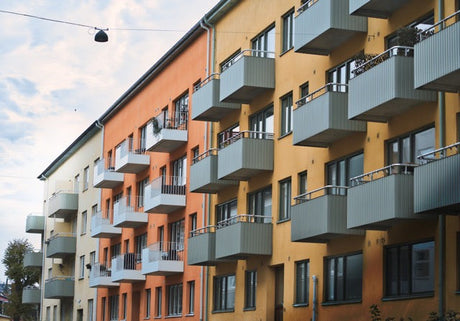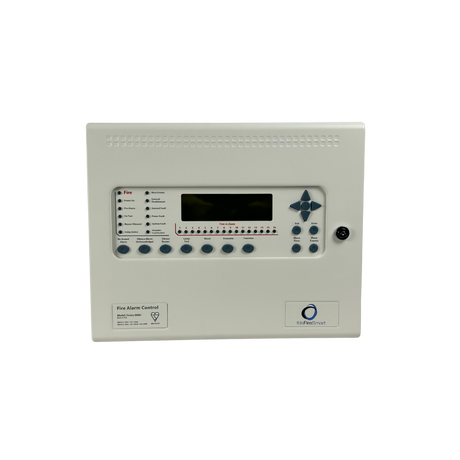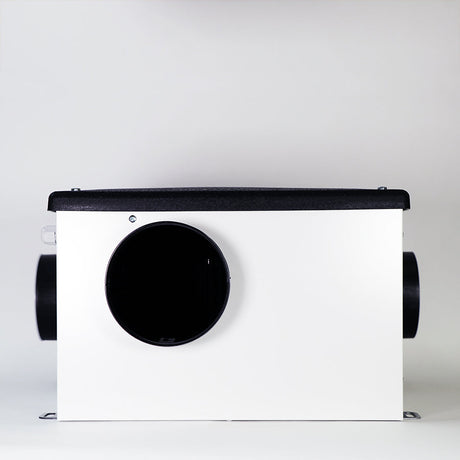Relevant UK Standards & Guidance – Smoke Venting Control Panels (SVCPs)
Disclaimer
This document is provided for general guidance only. It is not exhaustive and does not replace project‑specific advice from qualified consultants, fire engineers, or building control authorities. Users must verify the latest versions of all standards, regulations, and guidance before application. Requirements may differ in Scotland, Wales, Northern Ireland, or outside the UK; consult the local Technical Handbooks/Building Regulations and the enforcing authority.
Executive Summary
This report summarises the key UK and European standards for Smoke Venting Control Panels (SVCPs) used to operate natural smoke and heat exhaust ventilators (NSHEVs/AOVs), smoke control dampers, and smoke control fans. It covers product standards, power supplies, EMC/environmental requirements, UKCA/CE conformity, cabling, commissioning and O&M. Use with BS 7346‑8 for system design/installation and the appropriate equipment standards (e.g., EN 12101‑2/‑3/‑8).
Scope
• Applies to control panels for:
– Natural smoke vents (NSHEV/AOV) to BS EN 12101‑2
– Smoke control dampers to BS EN 12101‑8
– Smoke control fans to BS EN 12101‑3
– Pressure Differential Systems (PDS) to BS EN 12101‑6 and BS EN 12101‑13 (design/installation)
• Includes addressable/programmable SVCPs and simpler zone panels (e.g., single‑zone AOV panels).
Summary Table – Key Standards for Smoke Venting Control Panels
|
Standard / Regulation |
Scope |
What it covers for SVCPs |
When it applies |
|
BS EN 12101‑10:2005 |
Power supplies for smoke/heat control systems |
Primary/standby power, battery charging/monitoring, autonomy/performance classes. |
All SVCPs providing power to smoke control equipment (NSHEV, fans, dampers). |
|
prEN 12101‑9:2004 (draft) |
Control panels for smoke/heat control systems |
Product performance/classification/test principles for control panels (not harmonised). |
Used as best‑practice where accepted; confirm with Building Control and certification body. |
|
BS 7346‑8:2013 |
Smoke control – Code of practice |
UK code of practice for planning, design, installation, commissioning and maintenance. |
All UK smoke control projects (design/installation/commissioning/O&M). |
|
BS EN 12101‑2 |
Natural smoke and heat exhaust ventilators (AOV/NSHEV) |
Defines NSHEV product performance incl. actuator & control interface expectations. |
Where SVCPs operate NSHEVs/AOVs (e.g., opening time, environmental classes). |
|
BS EN 12101‑8 |
Smoke control dampers |
Product performance and control interface expectations. |
Where SVCPs actuate dampers for smoke control/compartmentation. |
|
BS EN 12101‑3 |
Smoke control fans |
Product performance and interface expectations. |
Where SVCPs command smoke extract/supply fans. |
|
BS EN 12101‑6:2022 & BS EN 12101‑13:2022 |
Pressure Differential Systems (PDS) |
Design/installation (‑6, ‑13) including control logic, monitoring, fail‑safe operation. |
Where SVCPs control PDS for stair/lobby pressurisation or depressurisation. |
|
BS 8519:2020 |
Fire‑resistant power/control cable systems |
Selection and installation categories; survival times; control wiring guidance. |
All life‑safety control and field wiring between SVCPs and devices. |
|
BS 9999:2017 |
Fire safety in design/management of buildings |
Strategic fire safety approach; interfaces and management context. |
Non‑domestic buildings alongside project fire strategy. |
|
BS 9991:2024 |
Residential fire safety |
Residential design considerations for smoke control systems. |
Residential projects (apartments, etc.). |
|
BS 7671:2018+A2:2022 (Amendment 3:2024) |
IET Wiring Regulations |
Electrical safety of mains supplies to SVCPs and distribution. |
All mains‑fed SVCPs and associated circuits. |
|
EN 50130‑4 / EN 50130‑5 |
EMC immunity / Environmental tests |
Immunity and environmental robustness for alarm/control equipment. |
Demonstrated by SVCP manufacturers as part of product compliance. |
|
BS EN 50575:2014+A1:2016 |
CPR – reaction to fire for fixed cables |
Euroclass for fixed installation cables (reaction‑to‑fire). |
Select cable classes appropriate to building strategy; complements BS 8519/BS 5839. |
|
UKCA / CE (UK CPR & EU CPR) |
Conformity marking for construction products |
Market access & marking for GB/NI; DoP for applicable products. |
Applied to designated/harmonised products (e.g., BS EN 12101‑10 power supplies). |
Notes on Standards (Plain‑English)
• BS EN 12101‑10 defines SVCP standby autonomy and battery performance for smoke control duty (typical designs target 72 h standby plus operations; confirm project requirements).
• prEN 12101‑9 is a draft control panel product standard; many UK SVCPs claim conformity to its principles, but it is not a harmonised/designated standard. Use alongside BS 7346‑8 and manufacturer certification.
• BS EN 12101‑2/‑3/‑8 set the requirements for the controlled equipment; the SVCP must achieve those functions and timings via certified interfaces.
• BS EN 12101‑6 and BS EN 12101‑13 (both 2022) are the current PDS standards (stair/lobby pressurisation).
• BS 8519 provides UK guidance on fire‑resistant power and control wiring between SVCPs and field devices; apply categories and survival times from the fire strategy.
• EN 50130‑4/‑5 are commonly used for EMC/environmental robustness of control equipment such as SVCPs.
• UKCA/CE: For GB, CE marking for construction products remains recognised alongside UKCA; NI recognises CE under the Windsor Framework. Confirm client policy.
Decision Guide – Selecting & Specifying Smoke Venting Control Panels
• 1) Identify the smoke control strategy: NSHEV (EN 12101‑2), dampers (EN 12101‑8), fans (EN 12101‑3), or PDS (EN 12101‑6/‑13).
• 2) Choose an SVCP with certified power supply per BS EN 12101‑10 and (where accepted) product performance aligned with prEN 12101‑9 principles.
• 3) Determine required standby autonomy (often 72 h) and number of post‑standby operations; verify battery calculations and charger capacity.
• 4) Apply BS 8519 to select fire‑resistant power/control wiring categories and routes; confirm fixings, supports and circuit segregation.
• 5) Define cause‑and‑effect: vent groups, make‑up air, interlocks with fire alarm (BS 5839‑1:2025) and other systems (lifts, doors, dampers, fans).
• 6) Confirm environmental & EMC suitability (EN 50130‑4/‑5) and IP rating to BS EN 60529 where panels are exposed.
• 7) Set out commissioning tests, maintenance intervals, and O&M evidence per BS 7346‑8 and manufacturer instructions.
Detailed Guidance
1. Product & Power Compliance
• Power supplies shall comply with BS EN 12101‑10: battery autonomy, charger performance, monitoring and fault reporting.
• Where control panel product requirements are declared to prEN 12101‑9, confirm listed functions (zones, overrides, monitoring) and independent test reports/certificates.
2. Interfaces & Controlled Equipment
• NSHEV/AOV: Interfaces shall deliver opening within the time/classification declared to BS EN 12101‑2, including environmental class (T, WL, SL) and durability (Re).
• Smoke dampers (EN 12101‑8): Provide monitored open/close, fail‑safe behavior, and group logic to meet the fire strategy.
• Smoke fans (EN 12101‑3): Provide start/stop, run confirmation, fault monitoring, and interlocks for make‑up air and dampers.
• PDS (EN 12101‑6/‑13): Implement pressure/door‑force limits, differential pressure monitoring, and fail‑safe controls per design calculations.
3. Cabling, Routing & Survivability
• Apply BS 8519 categories for life‑safety circuits; coordinate with BS 5839‑1:2025 for fire alarm interface circuits.
• Specify CPR reaction‑to‑fire class per BS EN 50575 for fixed cables; use fire‑resistant types (e.g., BS 7629‑1/BS 7846) to achieve survival time per strategy.
• Use appropriate fire‑resisting fixings/supports; segregate from non‑fire‑resisting services as required.
4. Control Logic, Monitoring & User Interfaces
• Provide zoned/group control, manual overrides, local indicators, fault logging, and remote monitoring as required by the strategy and BS 7346‑8.
• Integrate with the fire alarm (BS 5839‑1:2025) using monitored interfaces (EN 54‑18/‑21 as applicable).
5. Environmental & EMC
• Confirm operating temperature/humidity range suits the installation; apply EN 50130‑5 environmental severities as appropriate.
• Demonstrate EMC immunity per EN 50130‑4 and ensure emissions do not interfere with life‑safety systems.
6. Documentation & Certification
• Maintain product certificates, test reports, battery calculations, wiring schedules, cause‑and‑effect matrices, and as‑fitted schematics.
• For designated products (e.g., EN 12101‑10 power supplies), retain DoP and marking (UKCA/CE) documentation.
Commissioning Checklist – Smoke Venting Control Panels
☐ Design documentation: strategy (NSHEV/damper/fan/PDS), zoning, cause‑and‑effect approved by the fire engineer.
☐ Power supply to BS EN 12101‑10: battery calculations checked; autonomy and charger current verified.
☐ Panel functions: manual overrides, indicators, fault monitoring, event logging tested (per spec and prEN 12101‑9 principles).
☐ Interfaces proven with equipment: NSHEV opening time and angle; damper open/close with feedback; fan start with run/fault feedback.
☐ PDS tests (if applicable): pressure setpoints verified; door forces within limits; fail‑safe conditions tested.
☐ Fire alarm interfaces: monitored inputs/outputs proven (BS 5839‑1:2025); ARC routing if provided (EN 54‑21).
☐ Cabling: correct fire‑resisting type and routing; fixings/supports fire‑resisting; segregation verified; CPR Euroclass recorded.
☐ EMC/environmental suitability confirmed (EN 50130‑4/‑5); IP rating adequate (BS EN 60529).
☐ Battery on‑load tests: mains fail simulation; emergency operation on battery; recharge times observed per manufacturer data.
☐ Records compiled: certificates, DoPs (where applicable), test results, logs, as‑fitted drawings, O&M manuals, and maintenance schedule.
O&M Evidence – What to File
• Product certificates (BS EN 12101‑10), any prEN 12101‑9 test reports, and manufacturer declarations.
• Battery sizing worksheets, charger specs, and autonomy verification records.
• Cause‑and‑effect matrix, zoning drawings, and interface schedules.
• Routine test/maintenance plan in line with BS 7346‑8 and manufacturer guidance (including battery replacement intervals).
• Training records and user instructions for fire service/manual overrides.
Master Quick Reference Table – SVCP Standards
|
Standard |
Applies to |
Plain‑English Description |
|
BS EN 12101‑10:2005 |
SVCP power supplies |
Defines performance & tests for primary/standby power including battery autonomy and monitoring. |
|
prEN 12101‑9:2004 (draft) |
SVCP product principles |
Draft product requirements for control panels (functions, classifications, tests). Not harmonised. |
|
BS 7346‑8:2013 |
System design/installation |
UK code of practice for smoke control system planning, design, installation, commissioning, maintenance. |
|
BS EN 12101‑2 |
Controlled NSHEVs/AOVs |
Product performance for vents/actuators; SVCP must meet opening time/position and monitoring needs. |
|
BS EN 12101‑8 |
Controlled dampers |
Product performance for smoke control dampers; SVCP open/close + feedback control. |
|
BS EN 12101‑3 |
Controlled fans |
Product performance for smoke extract/supply fans; SVCP start/stop, run confirmation. |
|
BS EN 12101‑6:2022 & BS EN 12101‑13:2022 |
PDS systems |
Current standards for pressurisation/depressurisation systems controlled by SVCPs. |
|
BS 8519:2020 |
Cabling survivability |
Selection/installation of fire‑resistant power/control cables for life‑safety systems. |
|
BS 9999:2017 / BS 9991:2024 |
Fire safety context |
Non‑domestic/residential fire safety design context for smoke control. |
|
EN 50130‑4 / EN 50130‑5 |
EMC / environmental |
Immunity and environmental test severities for alarm/control equipment. |
|
BS EN 50575:2014+A1:2016 |
Cables (CPR) |
Euroclass reaction‑to‑fire for fixed installation cables used with SVCPs. |
|
UKCA / CE (UK CPR & EU CPR) |
Conformity marking |
Marking & DoP rules for designated/harmonised products (e.g., EN 12101‑10 power supplies). |
One-Page Commissioning Checklist – Smoke Venting Control Panels
This checklist is a condensed, printable version for site engineers to use during commissioning of smoke venting control panels (SVCPs). Each item should be ticked off, and results recorded in commissioning sheets.
☐ Confirm design documentation available (fire strategy, cause‑and‑effect, zoning, schematics).
☐ Verify panel mains supply conforms to BS 7671:2018+A2:2022 (Amendment 3:2024).
☐ Check power supply autonomy and battery calculations meet BS EN 12101‑10 requirements.
☐ Prove mains fail test: panel operates on batteries for required standby + alarm operations.
☐ Verify manual override controls, indicators, fault monitoring and event logging function correctly.
☐ Test NSHEVs: vents open to certified fire position within 60 s; feedback signal received.
☐ Test dampers: open/close cycle with monitored feedback per BS EN 12101‑8.
☐ Test smoke fans: start/stop from panel, run confirmation and fault monitoring received.
☐ If PDS: verify door force, pressure differential, fail‑safe operation per BS EN 12101‑6/‑13.
☐ Test fire alarm interface (BS 5839‑1:2025): alarm input triggers correct vent/damper/fan response.
☐ Test ARC connection (if provided) per EN 54‑21.
☐ Inspect cabling: correct fire‑resisting type, supports/clips, segregation, CPR Euroclass recorded.
☐ Confirm environmental/IP suitability and EMC compliance (EN 50130‑4/‑5).
☐ Perform battery discharge/recharge test under load; verify charger recovery time.
☐ Assemble commissioning records: test results, as‑fitted drawings, DoPs, O&M manuals, user training.





